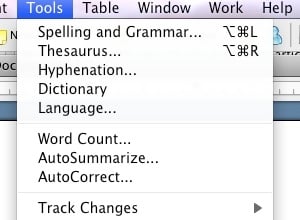How many times has this happened? You compose a blog post, usually in a hurry, then hit the submit button, only to read it later and wonder how in the heck you missed what is a glaring error. I am the world’s worst.
Years ago, a veteran magazine editor gave me this advice, “Never edit your own stuff.” It’s advice which, when possible, I’ve taken to heart. The only problem is, how many of us are in a position to have another person, preferably an editor, proof our copy? In lieu of that, here are some blog copywriting tips I’ve picked up along the way that can almost guarantee that what I intended to say is what I actually said.

- Use spellcheck. That’s a no-brainer, right? If you’re posting on a personal blog, it might not be such an issue, but if you’re blogging for business, I think correctly spelled words along with the use of proper grammar is a non-negotiable. Nevertheless, as obvious as this might seem, I suspect the spellcheck icon in the editing toolbar is one of the least clicked.
By the way, one of the most frequent errors people make when creating web copy is saying “you” when they meant to say “your.” Obviously, spellcheck won’t catch that error.
- Proofread the post using preview mode. Computer monitors aren’t best suited to reading. It is even better to print your copy and proofread that way, although that’s not always possible. The main point here is proofread.
- Read the copy aloud. Unless you’re in Starbucks or on a crowded subway, reading the copy aloud is a good practice. It’s another way for your brain to wrap itself around the text and insure it has a logical, readable flow.
- Practice use of acceptable style, but not at the expense of forsaking your own. By “acceptable style” I’m referring to AP style, which is a standard for journalists. That means doing things like saying “OK” instead of “ok.” That being said, as a blogger it’s important to develop your own unique style (voice). For me, that means the use of devices like an ellipsis, the three dot sequence (…). In addition to what Wikipedia says, I use it to represent the idea of a thoughtstream. I don’t know when I started doing that, but it’s developed into somewhat of a signature, so much so I now incorporate it into blog post titles.
- Put some distance between the time you write the post and when you publish it. Again, it’s not always feasible, but when you can, let a period of time pass between writing and publishing. Then, just prior to publishing, proofread the post again. You’ll be amazed at how much difference 24 hours can make in your ability to catch mistakes.
- Ask another person to proofread the post. Yeah, I know. I’ve already said that’s not normally possible. It remains good advice nonetheless.
- Accept that even when copy is proofed, sometimes an error sneaks through undetected. I’ve seen it time and again in books published by major publishers. Even highly paid editors are human. Mistakes happen. Heck, in preparing this post I practiced every one of these tips and there still might be a mistake. If you find one (or more), let me know via a comment.
Probably the most prolific blogger on the subject of copywriting today is Brian Clark at Copyblogger. If you really want to learn how to write compelling copy, read his stuff.
By the way, a funny thing happened on the way to completing this post. I googled the phrase “blog copywriting” and the number one return was a post I wrote for Allbusiness.com in December 2006. It contains even more copywriting tips. I love Google!
Something else the venerable old editor told me was to try to remove as many uses of “the” as possible and still make the copy readable. It’s not uncommon for writers to add an unnecessary prepositional phrase at the end of a sentence. For example, above I said “it’s developed into somewhat of a signature.” I could have said, “It’s developed into somewhat of a signature for me.” I’ve found, when possible, lopping off that last phrase cleans up the copy, making it leaner and more readable.





